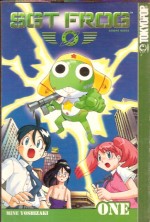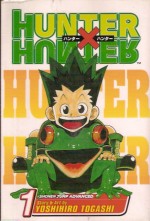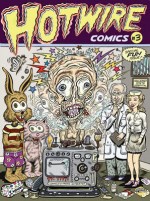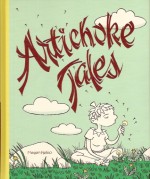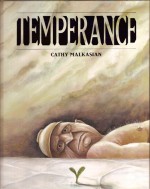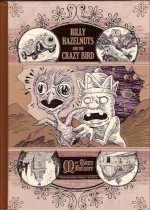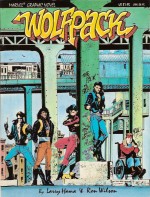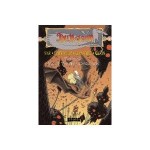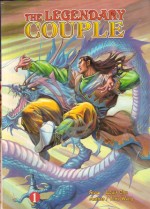
By Robert Louis Stevenson, adapted by Guido Crepax (Catalan Communications)
ISBN: 978-0-87416-079-6
Guido Crepax was born in Milan in 1933, the son of a noted cellist, and grew up in an atmosphere of art and music (his closest childhood friend was the noted musician and conductor Claudio Abado). Inevitably the boy Crepax became a creative artist in his own right. Whilst studying architecture in the 1950s he freelanced as a graphic designer, illustrator and printmaker, producing book, medical texts and magazine covers, posters and record sleeves most notably for Classical and Jazz musicians ranging from Charlie Parker and Fats Waller to Domenico Modugno.
He won acclaim and advertising awards throughout the 1950s, but was driven to do still more. In 1963 he began drawing comics, and two years later created his most famous character Valentina for the second issue of Linus. She was initially the lead character’s girlfriend, but whereas superhero Neutron soon lost the interest of readers, the sexy, psychedelic, culturally bold and accessible distaff evolved to become an evocative, fantastic, sophisticated, erotic zeitgeist of the 1960s and far, far beyond. He passed away on July 31, 2003.
Although noted – if not always revered – for his strongly erotic female characters, Crepax was an astute and sensitive tale-teller and examiner of the human condition, and all his varied works vibrate with strong themes of charged sexuality and violence, none more so than his chilling, oppressive adaptation of Strange Case of Dr. Jekyll & Mr. Hyde.
As Editor Maurice Horn points out in his introduction, Stevenson’s novella – first published in January 1886 by Longmans, Green & Co. – has never been as faithfully adapted in any other medium: the tale being constructed and narrated as a recap within a flashback, and almost utterly devoid of any relevant female characters. The story revolutionised not only fiction, but also modern sensibilities, cementing an entire concept of human behaviour into the modern lexicon and becoming a keystone of two separate literary genres, science fiction and horror, whilst maintaining for almost its entire duration the semblance of just another tale of mystery and detection. What it must have been to get to that final chapter and discover an entirely new kind of ending! We simply cannot imagine…
For most readers of the text, rather than viewers of the impossibly large number of film, television, radio and stage productions, the brief morality play is clearly a metaphor (I, for example, have always felt it addressed social repression via an examination of addiction) and Crepax has chosen to interpret the issue here as one of unleashed sexual license…
Narrator Gabriel John Utterson is friend and legal representative to Gentleman Scientist Henry Jekyll, a brilliant, upstanding man obsessed with his image and standing in a rich and excessively reputation-driven society. When the wizened, disreputable Edward Hyde appears and begins to exert some inexplicable, overwhelming hold upon the genteel Jekyll, even keeping him from seeing his friends, Utterson is driven to investigate and uncovers a horrendous, unimaginable catalogue of the dwarf’s excesses, ranging from brutal violence, sexual bondage, blackmail and even murder…
Crepax retained the unique narrative structure, dialogue and even chapter headings of the original text, but peppered his visual interpretation with the highly charged, sexually explicit imagery he was – and is – notorious for in such a manner that their sybaritic inclusion made perfect sense. Following the eerie unraveling of the saga in ‘Story of the Door’, ‘The Carew Murder Case’, ‘The Letter’, ‘Incident at Dr. Lanyon’s’, ‘The Window’, ‘The Last Night’, ‘Dr Lanyon’s Account’ comes the revelatory, post-mortem disclosures of ‘Henry Jekyll’s Confession’ and Utterson’s shocked realisation of the pressures of English society and the forces they contain and conceal within every man…
Stark, shocking, convulsively claustrophobic in its public scenes whilst indolently free and spacious for the unleashed hedonistic, yet curiously idyllic and lyrical depictions of debauchery, Crepax’s artistic stylisations are as always cannily calculated to work on the reader’s subconscious and bestow an unrelenting power and oppressive inevitability to the tragedy.
Here is a powerful saga magnificently retold using the language and terms of the British Empire, but this highly adult interpretation is also unflinching in its sexual imagery, so if such visual candour depicted in a truly unique style and manner is going to offend you don’t seek out this superb tale.
Everybody else with their senses of drama, history and perspective intact should go ahead and enjoy a brilliant tale stunningly interpreted: another classic graphic novel desperately in need of reprinting…
© 1989 Olympia Press, Italy, Luca A Staletti, agent. English translation © 1990 Catalan Communications. All rights reserved.

